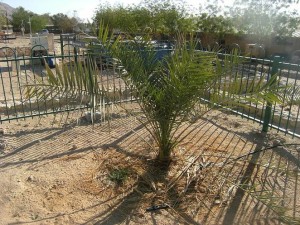For thousands of years, the Judean date palm tree was one of the most recognizable and welcome sights in the Middle East. Widely cultivated throughout the region for its sweet fruit and cool shade, the tree was a staple crop in the Kingdom of Judea. It was even mentioned several times in the Old Testament and served as a symbol of good fortune.
However, when the Roman Empire sought to conquer the kingdom in 70 AD, the invading army destroyed the forest of Judean palm trees, driving the species to extinction. For centuries, the tree was only a legend until archeologists discovered a small stockpile of 2,000-year-old seeds during excavations at Herod the Great’s palace in Israel.
In 2005, botanical researcher Elaine Solowey planted one of the seeds and was amazed when it sprouted, becoming the oldest known tree seed to germinate. Today, the ancient tree continues to grow and even produced its first flower in 2011. While it may be years before it begins producing fruit, Solowey is also working to revive other ancient trees from their long dormancy.
The resurgence of the Judean date palm tree is a remarkable reminder of the resilience of nature and the potential for long-lost species to be restored. It also serves as a reminder of the importance of protecting and preserving our natural heritage for future generations.

